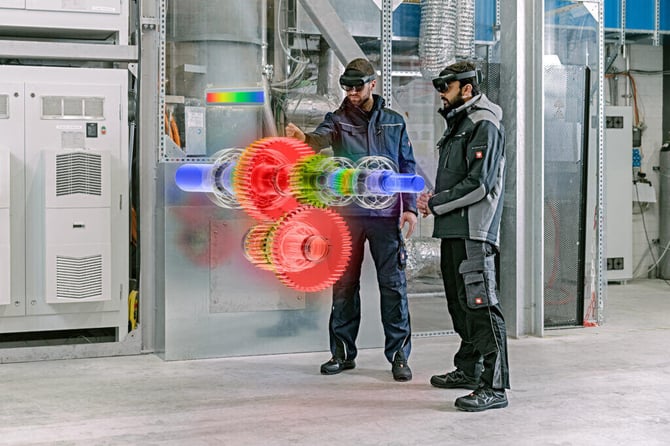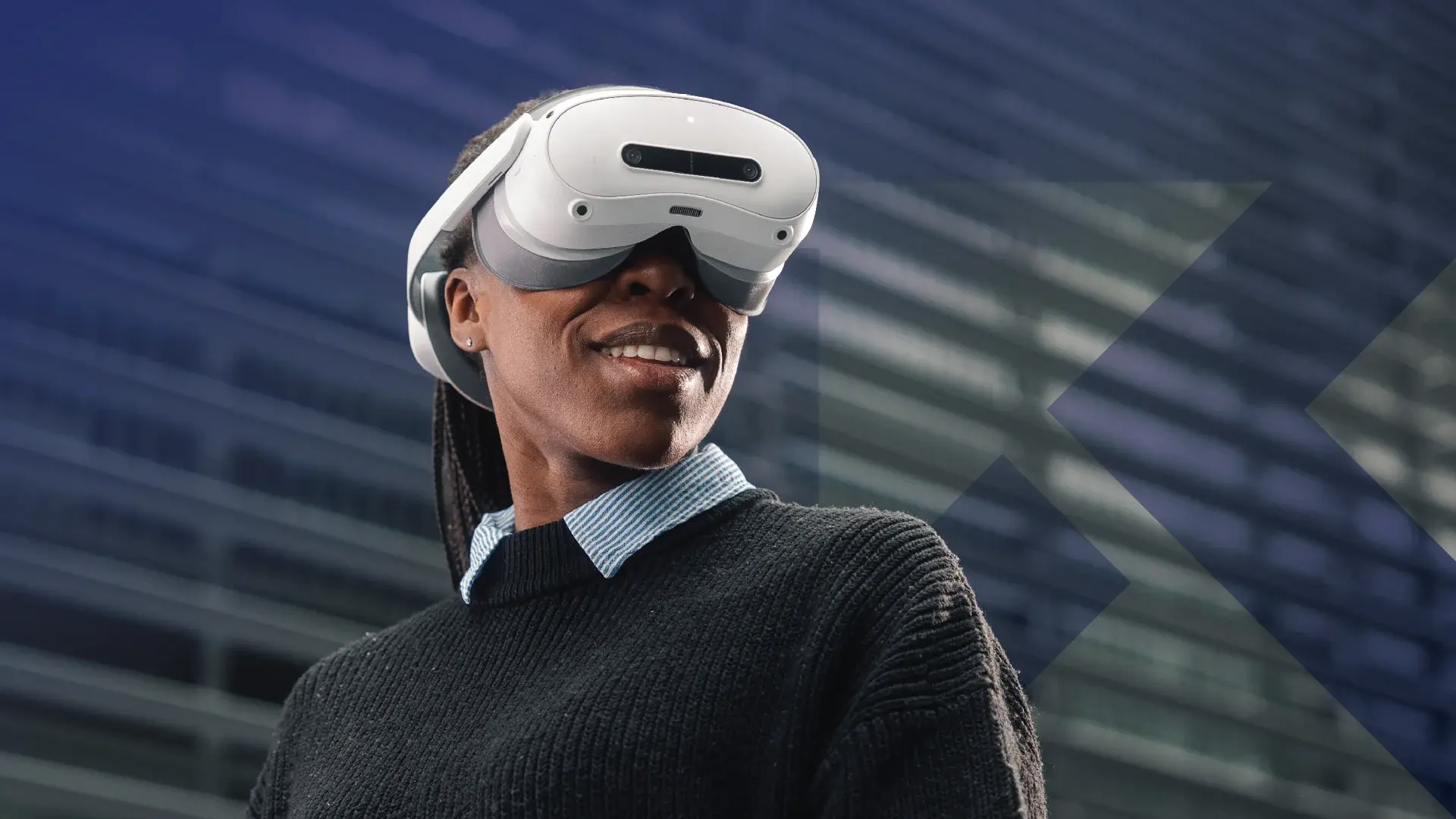Immersive Technologies Take Off
It is hard to imagine annual IoT trend lists that don’t include the subjects of 5G, cloud and edge computing. And rightly so: these technologies will shape the world of IoT in 2021. The secret winners in this field are immersive technologies such as augmented reality (AR). Thanks to higher bandwidths and more flexible, external computing capacities, augmented and virtual reality applications can finally blossom into their full potential.
The Internet of Things (IoT) connects physical and virtual worlds. Data from IoT-enabled devices is collected, converted into information and made visible in real time through the likes of augmented (AR) and virtual reality (VR). Immersive technologies represent the IoT, so to speak, by augmenting the world with information derived from the IoT or even immersing us in it completely. Despite its potential, the exponentially predicted growth of AR/VR has so far fallen short of expectations. This said, 2020 has become a turning point.
The interest in and demand for augmented and virtual reality has increased enormously due to the pandemic. Companies are using immersive technologies to improve collaboration, strengthen customer loyalty, optimise workflows and capture and transfer knowledge in times of social distancing. 5G, cloud and edge computing will continue to drive this development in 2021. Ultra-high bandwidths and low latency times through 5G as well as the increasing spread and acceptance of cloud and edge structures enable new XR (an umbrella term for all immersive technologies) use cases that were not possible before. Currently, there are still technological hurdles that can make the use of AR and VR a challenge.
Technology trend: XR Streaming
The limited computing and graphics power of mobile devices like smartphones, tablets and data glasses creates problems for both developers and end users. The fact that performance is limited means that the visualization of 3D content in AR/VR is also restricted. Data must sometimes be processed or reduced in a complex way and the quality of the experience (e.g. graphic effects) is also far below what we are used to from modern PC programs. However, mobile devices and further optimization of the form factor are necessary to further establish immersive technologies. It is also clear that as soon as AR and VR reach the mass market, mobile use will increase.

New technology trend: XR Streaming enables data-intensive AR/VR applications to be streamed in real time to mobile devices. This opens up new fields of application for immersive technologies in the IoT environment.
One trend that companies like Microsoft, Nvidia and Hololight are currently working on is XR Streaming. This means that the computing power for running applications does not have to come from the mobile device itself, but is provided by a powerful local server or from the cloud. XR Streaming makes it possible to experience AR and VR content – such as 3D CAD models or BIM data – in unprecedented detail and complexity. What’s more, the CPU (Central Processing Unit) and GPU (Graphics Processing Unit) of the end device are only required to a small extent, which in perspective accommodates a reduction in the size of the end devices and optimization of the form factor. Streaming complete applications also increases data security in the IoT. Data is only streamed and not stored on the mobile device, but are rather stored on the server chosen by the customer.
How exactly does the cloud, edge computing and 5G come into play now?
In 2020, we could see an increase in cloud-based services – both on the provider and user side. In 2021, more and more AR/VR applications will migrate to the cloud or edge infrastructure and be fully streamed. This has the advantage that a separate costly infrastructure or setup time is no longer needed and applications can be used more flexibly and with immediacy, regardless of location. Low latencies and sufficient bandwidth are conducive to a quality experience. Modern cloud infrastructures are well suited here, and where real-time data availability is a critical factor, edge infrastructures are a good choice. Bandwidth, on the other hand, can become critical as soon as no Wi-Fi networks are available. Today’s 4G connections can reach their limits to handle data-intensive AR or VR streaming, which is why 5G is crucial for mobile applications in the field.
On-premise structures will not disappear and still have their advantages. However, the infrastructure of cloud and edge providers enables a highly scalable business model due to the flexible availability of computing resources. In 2021, many providers will offer their IoT and XR applications in the cloud, which can create a scalable, secure and also attractive pay-per-use model for customers. The new type of distribution and lower technical hurdles through XR streaming will also make it easier for many companies to access the technology and promote scalable solutions. By 2021, we will see AR/VR solutions in production use cases that seemed far away just a few years ago.

Augmentalix Joins Hololight as Official Reseller for the French Market
Ismaning, Germany – October 14, 2025–Hololight, the leading specialist in XR streaming technology and AR/VR software for the enterprise market,...
 Sandro Sailer
Sandro Sailer

